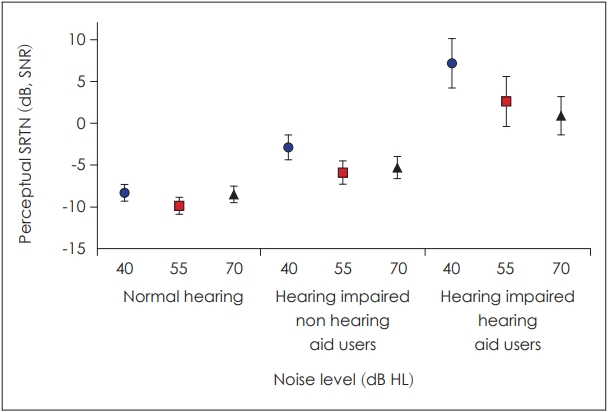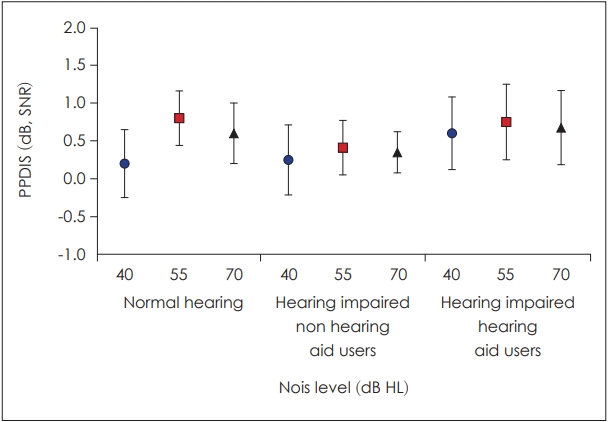1. Chisolm TH, Johnson CE, Danhauer JL, Portz LJ, Abrams HB, Lesner S, et al. A systematic review of health-related quality of life and hearing aids: final report of the American Academy of Audiology Task Force on the health-related quality of life benefits of amplification in adults. J Am Acad Audiol 2007;18:151–83.


4. Kitterick PT, Ferguson MA. Hearing aids and health-related quality of life in adults with hearing loss. JAMA 2018;319:2225–6.


9. Gerber SE, Fisher LB. Prediction of hearing aid users’ satisfaction. J Am Aud Soc 1979;5:35–40.

10. Grunditz M, Magnusson L. Validation of a speech-in-noise test used for verification of hearing aid fitting. Hear Balance Commun 2013;11:64–71.

11. Saunders GH, Forsline A. The performance-perceptual test (PPT) and its relationship to aided reported handicap and hearing aid satisfaction. Ear Hear 2006;27:229–42.


13. Saunders GH, Forsline A, Fausti SA. The performance-perceptual test and its relationship to unaided reported handicap. Ear Hear 2004;25:117–26.


15. Rajisha K. Development of low predictive sentence test in Malayalam [dissertation]. Bangalore: Bangalore Univ;2018.
16. Newman CW, Weinstein BE. The hearing handicap inventory for the elderly as a measure of hearing aid benefit. Ear Hear 1988;9:81–5.

17. Ventry IM, Weinstein BE. The hearing handicap inventory for the elderly: a new tool. Ear Hear 1982;3:128–34.

18. Ou H, Wetmore M. Development of a revised performance-perceptual test using quick speech in noise test material and its norms. J Am Acad Audiol 2020;31:176–84.


19. Kim S, Frisina RD, Mapes FM, Hickman ED, Frisina DR. Effect of age on binaural speech intelligibility in normal hearing adults. Speech Commun 2006;48:591–7.

20. Souza PE, Boike KT, Witherell K, Tremblay K. Prediction of speech recognition from audibility in older listeners with hearing loss: effects of age, amplification, and background noise. J Am Acad Audiol 2007;18:54–65.














